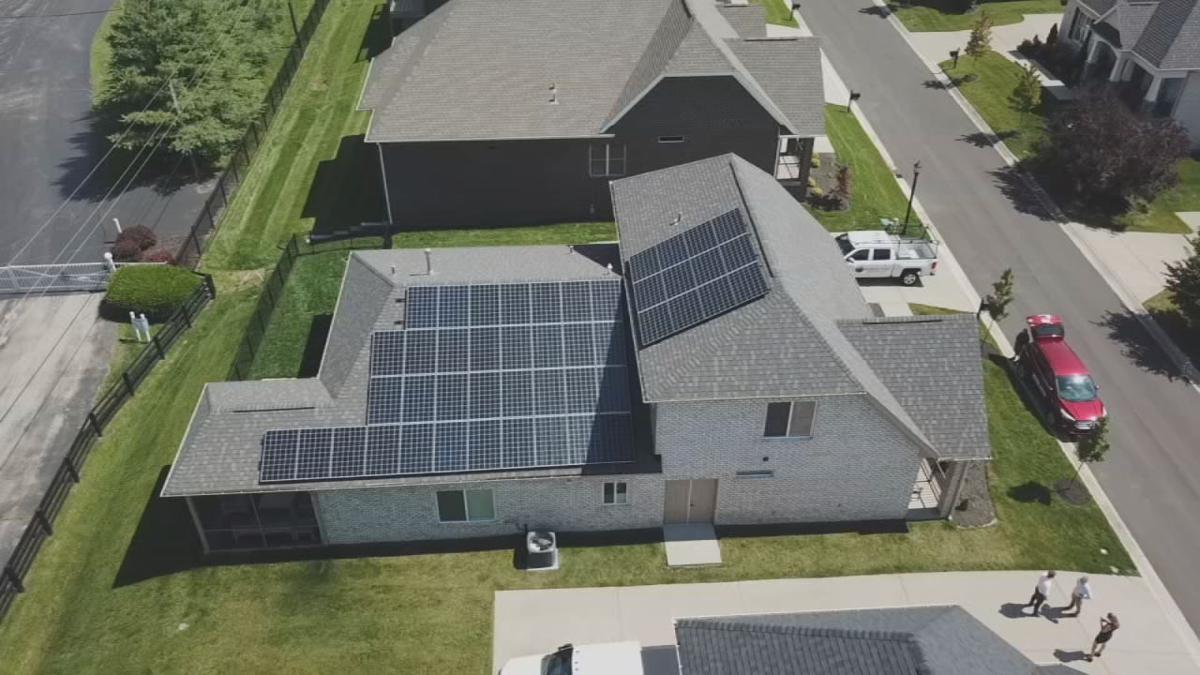
June 24, 2019
President and Chief Executive Officer Scott Prochazka
Centerpoint Energy, Inc.
1111 Louisiana Street
Houston, Texas 77002
scott.prochazka@centerpoint.com
Manager of Resource Planning Matthew Rice
Southern Indiana Gas & Electric Company d/b/a Vectren Energy Delivery
One Vectren Square
Evansville, Indiana 47708
matt.rice@centerpointenergy.com
Re: Concerns about Vectren’s All-Source RFP Timing, Design, and Evaluation Criteria
Dear President and CEO Prochazka and Manager Rice,
First, we would like to commend Vectren for issuing an All-Source Request for Proposal as part of its Integrated Resource Plan process. As you know, we reached out on December 4, 2018, to make this very request. However, Vectren has not afforded interested parties the opportunity to provide comments on its All-Source RFP, and the details of this RFP are significant enough and concerning enough that we felt compelled to provide some high level comments. Our concerns, outlined below, address the following aspects: timing, preference for operational control, bid evaluation, location priority, and nodal economic analysis. Ultimately, we ask Vectren to reconsider certain aspects of its RFP to ensure integrity in this exercise and ultimate procurement of resources.
1. Timing of RFP – Vectren issued its RFP on June 12, 2019, and requires that proposals be submitted by July 31, 2019. While the period from issuance to due date is similar to that of the NIPSCO RFP, NIPSCO made public its intent to issue an all-source RFP in advance on March 23, 2018, and provided stakeholders an opportunity to comment on a public RFP design summary document (and the actual RFP for those who had signed a nondisclosure agreement) in April of 2018, before it was issued on May 14, 2018. Vectren has not done this, and furthermore, as of June 24th, there is not even a press release on Vectren’s website announcing the RFP. In addition, Vectren requires respondents to hold pricing for one year from the proposal due date but will not start negotiations until mid-2020. This is despite the fact that the initial evaluation of those proposals would have been wrapped up by September 2019. Put another way, Vectren is giving itself a year and a half to evaluate bids where bidders have just 45 days to respond. In contrast, NIPSCO filed and received approval for some of the bids it selected in its RFP less than a year from the date those bids were due.
2. Preference for Operational Control – The RFP states that “Vectren has a preference for Proposals that provide Vectren with operational control of the asset, regardless of ownership position.” We are unclear why this would be necessary, particularly for renewables developers. Where a utility dispatches its own generators, this makes more sense; but as a MISO market participant, the purpose of this preference is much more muddied. Indeed, this seems likely to dissuade or disadvantage PPA offers. And the weighting of proposals which gives 20 points to Asset Purchases and zero points to PPAs bears out this concern. It is highly probable that one or more PPAs will be more cost effective for customers than asset transfer proposals and Vectren’s weighting of the latter, through multiple mechanisms in this RFP, is highly problematic.
3. Bid Evaluation – We have a number of concerns with respect to the evaluation of bids. Overall, we are concerned about the weighting of the different criteria for evaluation, how those weights were determined, and the discussion of the criteria weights.
a. For the Project Risk Factors criteria – which accounts for the largest share at 32% – it is not clear how a proposal will receive points if it does not meet Vectren’s preferences.
i. For instance, as discussed previously, one of the risks stated in the RFP evaluation criteria is operational control. The RFP states that proposals which offer Vectren operational control will receive 20 points, but there is no mention of how proposals that do not offer operational control to Vectren will be treated and no explanation as to why there is this discrimination against these types of proposals in the first place.
ii. For the ownership structure, also as mentioned previously, Asset Purchase Proposals receive 20 points whereas PPA Proposals do not receive any points for this category.
iii. The scoring metric for Fuel Risk gives a higher weight for facilities with firm and reliable fuel supply, as they receive the full 20 points available for this category, but there is no mention of how projects with no fuel supply at all would be treated. If such facilities get 0 points, this would clearly disadvantage renewables despite it intuitively having no Fuel Risk and thus warranting the full 20 points in this category.
iv. Further, 25% of the possible 20 points will be deducted for each year that a proposal’s delivery year precedes the target year of 2023/24. This seems decidedly biased against renewables which may offer a lower cost for an earlier delivery year due to the step down of the Production Tax Credit for wind and Investment Tax Credit for solar.
b. The overall weighting of the factors is surprisingly light on cost. And the weighting of cost does not make sense for Load Modifying Resources (LMR) and Demand Response (DR) in that it weighs those costs differently than generators,
40% compared to 30% of the total, respectively. In the Proposal Risk Factors category, the story is the same where generators have the highest weight at 32%, while it is just 20% for LMR/DR resources.
c. For generators, the calculation of the Levelized Cost of Energy (LCOE) will be key; thus, we have concerns that the methodology would be entirely up to Burns & McDonnell. At a minimum, each bidder should have the opportunity to review the calculation by Burns & McDonnell and be able to provide feedback on the LCOE calculated for their bid. Furthermore, Burns & McDonnell should seek to ensure that all likely-to-be capitalized costs are included in each project’s calculation and that depreciation schedules and discount rates are consistent with those that ratepayers are likely to face.
d. Next, it is not clear how all of these bid criteria will be used to weed out bidders, i.e., what minimum number of points are necessary to pass bids onto the IRP model. We are concerned that many cost-effective projects will be weeded out before they even have the chance to be evaluated in an IRP framework.
e. Finally, each bidder, as well as interested stakeholders with executed nondisclosure agreements, should have the opportunity to review and provide changes to the representation of their bid(s) in the IRP model, and any disagreements between the bidder and Vectren as to such representations should be reported to the IURC for consideration at such time that Vectren requests a certificate of need or similar authority. This is a necessary step for transparency since it is not clear that anyone other than Vectren and its consultants will be able to view all the responding bids. Indeed, a lack of transparency, in general, is a concern with the use of the Aurora modeling platform for this purpose. We are particularly concerned with Aurora’s apparent inability to provide all inputs, modeling parameters and settings, all outputs, and a copy of the model manual to non-licensee intervenors even under a nondisclosure agreement. If this material cannot be provided, this would be the time to adopt a model that can provide the necessary level of transparency.
4. Location Priority – The RFP states that “Vectren has a preference for projects located near its load.” It is not clear how “near” is defined, despite the fact that Section 4.1 states, “Non-conforming bids by Respondents to sell a generation facility or facilities not meeting the location requirements may be disqualified from consideration on that basis alone.” Further, Vectren arbitrarily reserves the right to add up to 100 points onto a Proposal if a generation facility is located in Southern Indiana and within its service territory for LMR/DR resources. We request clear criteria and further conversation about this.
5. Nodal Economic Analysis – Vectren requires bidders to provide a nodal analysis showing “expected unit economic metrics” in 2023, 2028, and 2033. Particularly given the extremely short timeframe for bidders to respond, we are concerned that this will narrow the pool of potential bidders significantly. We think it is unlikely that respondents have
this capability in house and would need to procure outside expertise in this short window to provide this information. Further, we question why Vectren would impose this requirement on bidders when it has the modeling capability to do nodal analysis itself.
Again, we appreciate that Vectren is taking this step to solicit bids for use in its IRP. However, we have grave concerns about the timing, design, and evaluation criteria that could ultimately result in a failed outcome if these issues are not addressed. We respectfully request Vectren’s careful consideration of our concerns and an opportunity for further dialogue to rectify these issues before the RFP response time has passed.
Thank you for your attention to this matter.
Sincerely,
Kerwin Olson, Executive Director
Citizens Action Coalition of Indiana
(317) 735-7727
kolson@citact.org
Thomas Cmar, Deputy Managing Attorney
Earthjustice, Coal Program
(312) 257-9338
tcmar@earthjustice.org
Wendy Bredhold, Senior Campaign Representative, Indiana and Kentucky
Sierra Club, Beyond Coal Campaign
(812) 604-1723
wendy.bredhold@sierraclub.org
John Blair, President
Valley Watch
(812) 464-5663
blair@valleywatch.net
Zach Schalk, Program Director
Solar United Neighbors of Indiana
(317) 268-2099
zach@solarunitedneighbors.org
Laura Ann Arnold, President
Indiana Distributed Energy Alliance
(317) 635-1701
Laura.Arnold@IndianaDG.net





